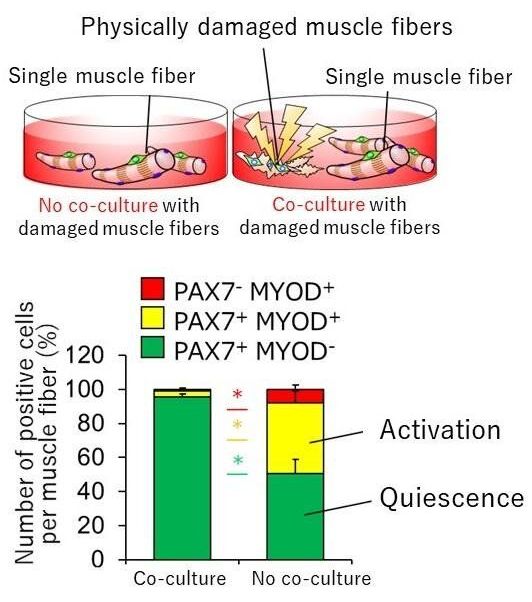A research collaboration between Kumamoto University and Nagasaki University in Japan has found that components leaking from broken muscle fibers activate “satellite” muscle stem cells. While attempting to identify the proteins that activate satellite cells, they found that metabolic enzymes, such as GAPDH, rapidly activated dormant satellite cells and accelerated muscle injury regeneration. This is a highly rational and efficient regeneration mechanism in which the damaged muscle itself activates the satellite cells that begin the regeneration process.
Skeletal muscle is made up of bundles of contracting muscle fibers and each muscle fiber is surrounded by satellite cells —muscle stem cells that can produce new muscle fibers. Thanks to the work of these satellite cells, muscle fibers can be regenerated even after being bruised or torn during intense exercise. Satellite cells also play essential roles in muscle growth during developmental stages and muscle hypertrophy during strength training. However, in refractory muscle diseases like muscular dystrophy and age-related muscular fragility (sarcopenia), the number and function of satellite cells decreases. It is therefore important to understand the regulatory mechanism of satellite cells in muscle regeneration therapy.
In mature skeletal muscle, satellite cells are usually present in a dormant state. Upon stimulation after muscle injury, satellite cells are rapidly activated and proliferate repeatedly. During the subsequent myogenesis, they differentiate and regenerate muscle fibers by fusing with existing muscle fibers or with together. Of these three steps (satellite cell activation, proliferation, and muscle differentiation), little is known about how the first step, activation, is induced.
